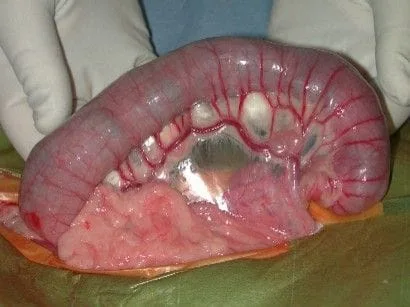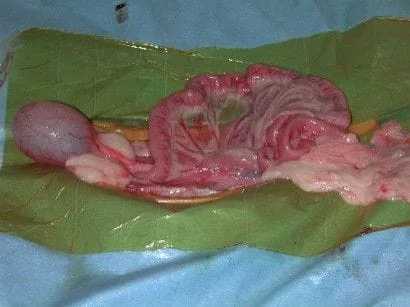Key Points
A common sign of megacolon is constipation
Medical therapy with stool softeners is the first-line treatment for this condition
Surgical removal of the colon is indicated if medical therapy has failed
Diarrhea is common just after removal of the colon, however, over a few months the stools become firmer, but likely will not be perfectly normal
Introduction
- Megacolon is a functional disorder that is defined as dilatation of the colon or large intestine; this leads to infrequent and difficult passage of feces and constipation
- There are congenital forms which are present from birth
- The acquired form is most common
- Megacolon is found primarily in cats, but also can occur in dogs
Idiopathoic megacolon definition
- Unknown cause
- Recurrent and progressives episodes
- Intractable constipation
- This is the most common form of the disease
Causes of megacolon
- Dietary and environmental factors such as foreign bodies in the colon, lack of exercise, and lack of litter box or dirty litter box that the cat does not want to use
- Painful defecation due to anal sac abscess or stricture of the anus
- Narrowed pelvic canal
- Due to previous fracture of the pelvis
- Intrapelvic tumors
- Neurologic disease which results is the inability to posture for bowel movements, or nerves controlling the signal to defecate are not working properly
- Idiopathic – unknown cause is most common
- Note: Normally cats can retain feces in the colon for a period of several days without harm; if the passage of feces is prevented the colon becomes distended; the duration and degree of constipation necessary to cause megaconlon is unknown
Clinical signs
- Passage of smaller stools than normal
- Less frequent defecation
- Straining to defecate
- Frequent trips to the letter box which are nonproductive
- Systemic signs
- Lack of appetite
- Depressed attitude
- Thin
- Dehydration
- Vomiting
- Anemia
Diagnosis
- Occasionally the history and physical examination are enough to diagnose megacolon, but other tests are important to identify a potential cause
- Rectal palpation may help to identify problems with the anus or pelvis that may be causing the constipation
- X-rays of the pelvis and abdomen are routinely taken
- Blood work usually is done in order to evaluate the overall health of the pet in preparation for general anesthesia
- Below is a radiograph of a cats abdomen (side view) showing impaction of the colon with stool

Treatment options
- Conservative
- Stool softeners and lubricating agents
- Cleansing enemas
- Manual removal of stool
- Dietary modification (increased fiber diet)
- Drugs to increase motility of the colon (cisapride…which recently has become not available)
- When conservative therapy is not effective surgery is recommended
- Surgery
- Removal of the colon
- The end of the small intestine is connected to the rectum
- Below is an example of megacolon; the entire colon was removed in this cat

- Below is a photo taken after the colon was removed and the small intestine was connected to the rectum

Postop care
- Antibiotics are given short term after surgery
- Pain medication is usually needed for a couple of days
- All laxatives are usually stopped
- Highly digestible food such as Eukanuba Low Residue diet is recommended for the life of the pet; most cats will eat this type of food, however other brands can also be tried
- Multiple litter boxes should be provided as your pet will need to have convenient access to these to prevent accidents outside the litter box
- Limit exercise for 3 weeks
- Watch for signs of infection
Potential complications
- Short-term
- Leakage of stool at the site of anastomosis (suture line) of the intestine which results in infection of the abdominal cavity
- Straining to defecate can take place during the first week
- Cramping of bowels – signs of this include cat suddenly running, sudden meowing and licking flank or belly; these cramps frequently resolve with time; bacterial overgrowth maybe a cause of this due to excessive gas buildup – metronidazole may be beneficial to decrease the gas production; strictly feeding cats Eukanuba low residue diet may minimize this.
- Loose bowel movement and increased frequency of BM’s following surgery is expected. This gradually improves over 2 to 3 months.
- Long-term
- About 30 to 50% of cats will have increased frequency of defecation for life
- Most cats will have softer than normal stool for the remainder of their lives
- Bacterial overgrowth of the intestine presents as gas and diarrhea which usually responds to medication and special diet
Contraindications of surgery
- Decreased anal sphincter tone before surgery likely will result in an incontinent cat in the postop period
- Cats that have decreased sensation in the rectum (this is very subjective to evaluate as our patients can’t talk)
Prognosis
- Generally the prognosis is good and the pet will return to a much happier state of life after surgery has been done


